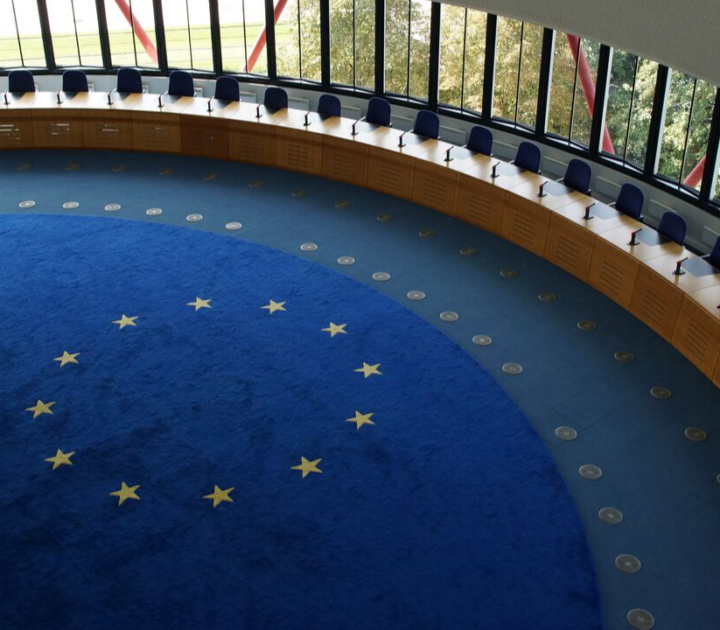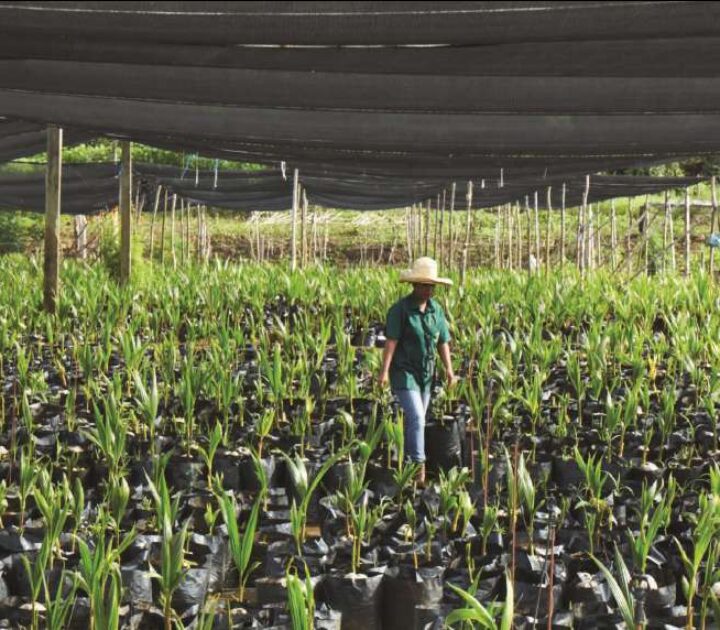
More than three decades after the first ecolabeling program was introduced, what is the verdict on their effectiveness? To find out we asked managers and sustainability practitioners – over a thousand from 70 countries and more than 20 industries – to share their views with us. In a nutshell, ecolabels have been useful in increasing sustainability awareness and performance, but there are also credibility concerns given the proliferation and fragmentation of such labels. And indeed, by now the Ecolabel Index lists 431 ecolabels in 246 countries and across 25 industries. [1]
In our survey concerning the adoption of ecolabels, we asked practitioners about the perceived level of pressure on environmental issues from different stakeholder groups. They noted that the main trigger is regulation, followed by pressure from employees and internal management. Perhaps surprisingly, consumer and non-governmental organization (NGO) pressure were lower down the list (Figure 1). One possible reason for the latter is that although NGO campaigns may be highly visible, their resources allow them to target only a limited number of companies.
Overall, 87% of our survey respondents declared that their company’s level of adoption of more sustainable practices had increased over the last five years. Against this backdrop of increasing adoption of sustainability practices, companies must decide whether ecolabeling can help relieve stakeholder pressure and, if so, which labels to pursue. Given the wide range of labels on offer and considering their limited geographic recognition, this is not always easy. Nonetheless, even for companies that do not adopt them, ecolabels have become more relevant as environmental attributes and are increasingly integrated directly into business-to-business (B2B) procurement and public sector spending. And these attributes often do follow the underlying standards of ecolabels even if the companies need not apply for corresponding ecolabels as such. In the European Union, for instance, directives on Green Public Procurement (GPP)[2] were defined in 2004.
The growth in the number of ecolabels and green procurement guidelines can be interpreted as a sign of success. However, many practitioners believe that the ecolabeling landscape has become overwhelming and confusing for companies and consumers alike. We look at the pros and cons of ecolabels, as well as at strategies and future challenges.
Benefits
A key benefit of ecolabels in the eyes of managers is that they can help a company strengthen the brand. Moreover, ecolabels are a way of addressing customer demands for more sustainable products. In some cases, adopting labels or standards may provide a competitive advantage to early adopters; however, differentiation tends to be only temporary. Once the standard is successful, it becomes a “hygiene factor,” i.e. it is the bare minimum required to do business. In addition, ecolabeling can help reduce a company’s risk of being attacked by a pressure group and, should this happen, ecolabeling organizations can provide support in responding to it. The good practices induced by ecolabeling can also reduce the risk of supply chain disruptions and help to ensure long-term access to raw materials and crops. The third-party certification aspect of ecolabels can also be useful in satisfying investor demands. Taking a more holistic perspective, ecolabels have the potential to raise sustainability awareness and performance across whole industries.
Sources of skepticism
In spite of the recognized benefits of adopting ecolabels, managers also expressed substantial skepticism. The credibility of ecolabels and the rigor of the criteria and certification procedures are major concerns. The short time between applying for and being awarded an ecolabel – which according to respondents is often less than 12 months – does not contribute to the credibility of labels. The adoption of ecolabels was also criticized for being short-term- and marketing-oriented. Moreover, practitioners seem concerned about potential conflicts of interest experienced by ecolabeling providers. Ole Just Sorensen of Grundfos A/S Management emphasized the competition between different labels in a race to gain market share: “The market for ecolabels is very confusing and, in some areas, it looks more like a new industry of ‘selling stickers’ and where generating money seems more important than the outcome and the importance of the label.” An additional criticism is that ecolabels can act as technical barriers to trade. Tata Steel’s Graeme Peacock explained: “In the construction sector, most ecolabels are national or regional, so for global companies like ourselves, they act as barriers to trade.” A more essential source of skepticism about ecolabels concerns their effectiveness in delivering real outcomes and their potential to achieve market transformation. Some managers warned that by focusing too much on ecolabels, there is a risk of “missing the big picture.”
Strategies
Many managers told us that their ecolabeling strategies are adapted to each product and geographical region, according to the level of consumer awareness of different sustainability issues, thus creating “niche markets” for ecolabeled products. In order to better tailor ecolabeling strategies to products and regions, some companies delegate such decisions to specific business units, rather than imposing them at a corporate level. Other companies prefer a centralized approach because they believe that the risk of error in adopting the wrong ecolabel is too high. With regard to communication strategies, although most firms that adopt ecolabels actively advertise them and display them on their products, 35% of adopters only communicate about ecolabels through other channels (e.g. sustainability reports and the sustainability section of their website) and 11% of adopters do not advertise them at all.
Some companies firmly support ecolabeling based on their strong conviction that ecolabels have the potential to achieve market transformation by informing and empowering customers. Others prefer to integrate sustainability into their brands and define internal programs, which may or may not be independently verified.
Hans Wendschlag, who leads the Hewlett-Packard EMEA Environmental Program and has over 25 years of experience in the field, strongly recommends that companies get involved in defining criteria whenever possible and take a proactive approach, just as HP does. The company has a team of over 15 people around the world who systematically track changes in the procurement requirements of large public and private sector customers. This information is considered when HP revises its own procurement guidelines and allows the company to set priorities, for instance, in replacing specific substances.
From fragmentation to consolidation
Opposition to and frustration with the current fragmentation of ecolabels is one of the most prominent messages expressed. Not only has selecting an ecolabel become a highly complex decision for firms but consumers are also confused. One of the main causes of fragmentation is the lack of consensus on qualifying criteria; practitioners therefore strongly recommend that ecolabel providers move toward consolidation and international recognition of labels. Numerous managers pointed out the potential of international industry-wide multi-stakeholder initiatives to reach the desired consensus.
As Figure 2 illustrates, consumer confusion, fragmentation of ecolabels and lack of consensus on criteria are the most important challenges in ecolabeling – 92% of respondents considered these three issues to be medium to extreme challenges.
Other challenges ahead
Figure 2 also shows how practitioners rated several additional challenges, including consumer pressure on low prices, which underscores the fact that sustainability is not a top purchase driver, such as cost or quality. In order to induce consumers to buy more sustainable products it might be useful to emphasize the “What’s in it for me” aspects associated with such products – which can include economic, health or any other direct benefits for the consumer.[3] Tools such as life cycle costing can be particularly helpful in identifying economic benefits for consumers. Additional challenges raised include the lack of comprehensiveness of labels and their lack of comparability within and across product categories.
Outlook
Overall, managers perceive that the initial momentum of ecolabels and the high expectation that they could be a means of achieving market transformation are declining as different challenges emerge. As Nestlé’s Duncan Pollard put it: “Fifteen years ago, certification and ecolabeling was considered to be the way forward. Now, we may be seeing the limits of its ability to transform markets and experiencing the first serious reappraisal of the conventional wisdom that if you wish to prove that you are sustainable you need a certification logo to prove it.”
Although greater efforts are needed in defining standards and in training, other constituents of certification schemes might be less necessary. In particular, external certification and labeling might not always be the most effective means of ensuring sustainability, especially in B2B. Nonetheless, as previously noted, the underlying criteria of ecolabels are increasingly being integrated into organizations’ procurement requirements, so companies cannot afford to ignore them.
Practitioners stress that, although ecolabels may be replaceable, sound sustainability strategies and top management commitment are not. Ecolabels can be useful in communicating about sustainability, but they should remain a means and not become an end. Although managers do not necessarily foresee an explosion in the use of ecolabels in the coming years, they do expect greater traceability of products and more transparency in the sustainability performance of supply chains.
This artical was written based on a 23 page report that outlined survey results of an empirical analysis of the adoption of ecolabels by companies.
Ralf W. Seifert is Professor of Operations Management at IMD. He teaches on the Managing the Global Supply Chain (MGSC) and the Orchestrating Winning Performance programs.
Joana M. Comas is a PhD candidate at the Chair of Technology and Operations Management of the College of Management of Technology at EPFL. She previously worked for Nestlé-Nespresso after obtaining a Master’s in Industrial Engineering from the Technical University of Catalonia, UPC-Barcelona.
[1] http://www.ecolabelindex.com (April 5, 2012)
[2] http://ec.europa.eu/environment/gpp/index_en.htm (April 5, 2012)
[3] SustainAbility, 2011. Signed, sealed…delivered? Behind certifications and beyond ecolabels. November 2011.





